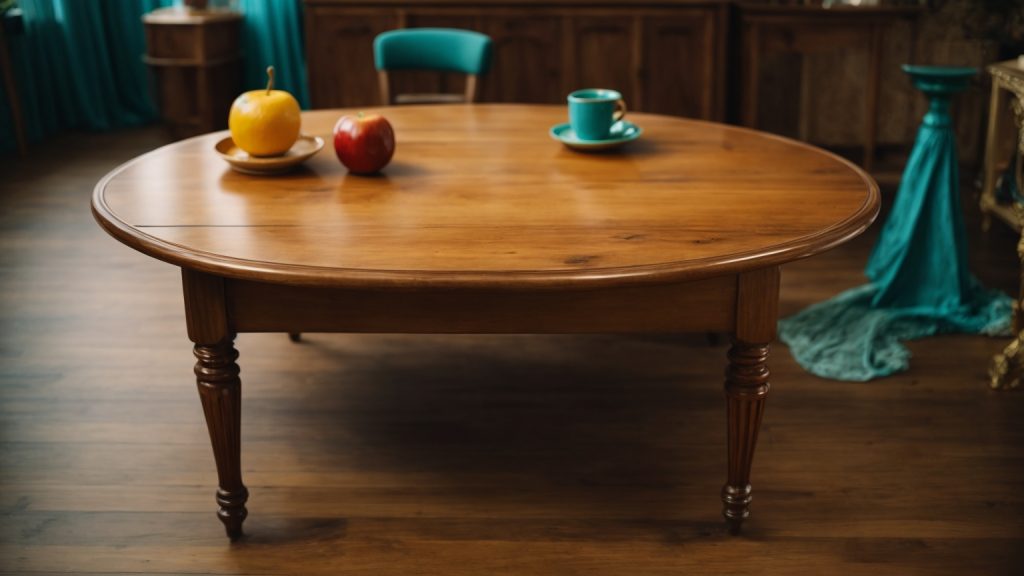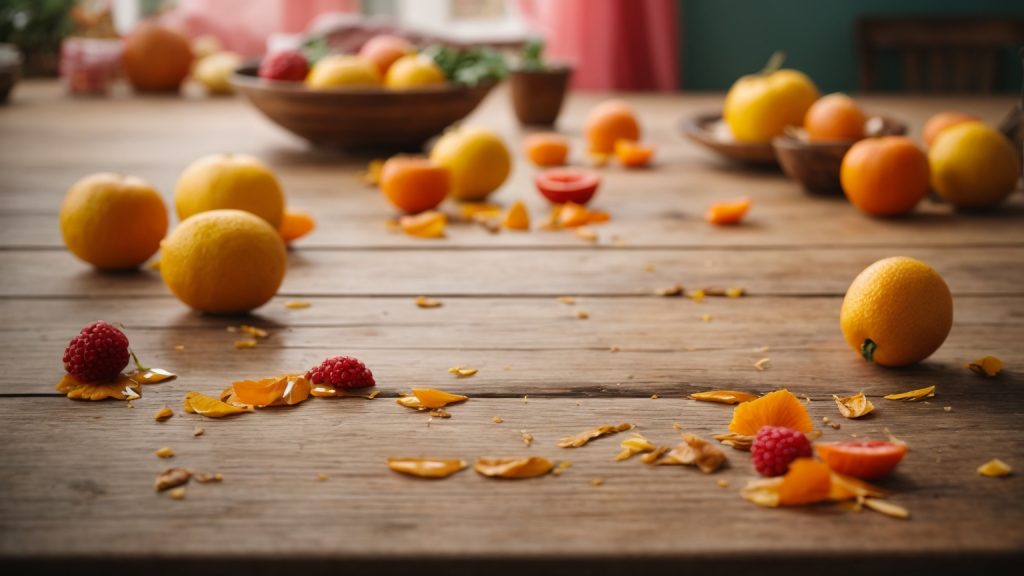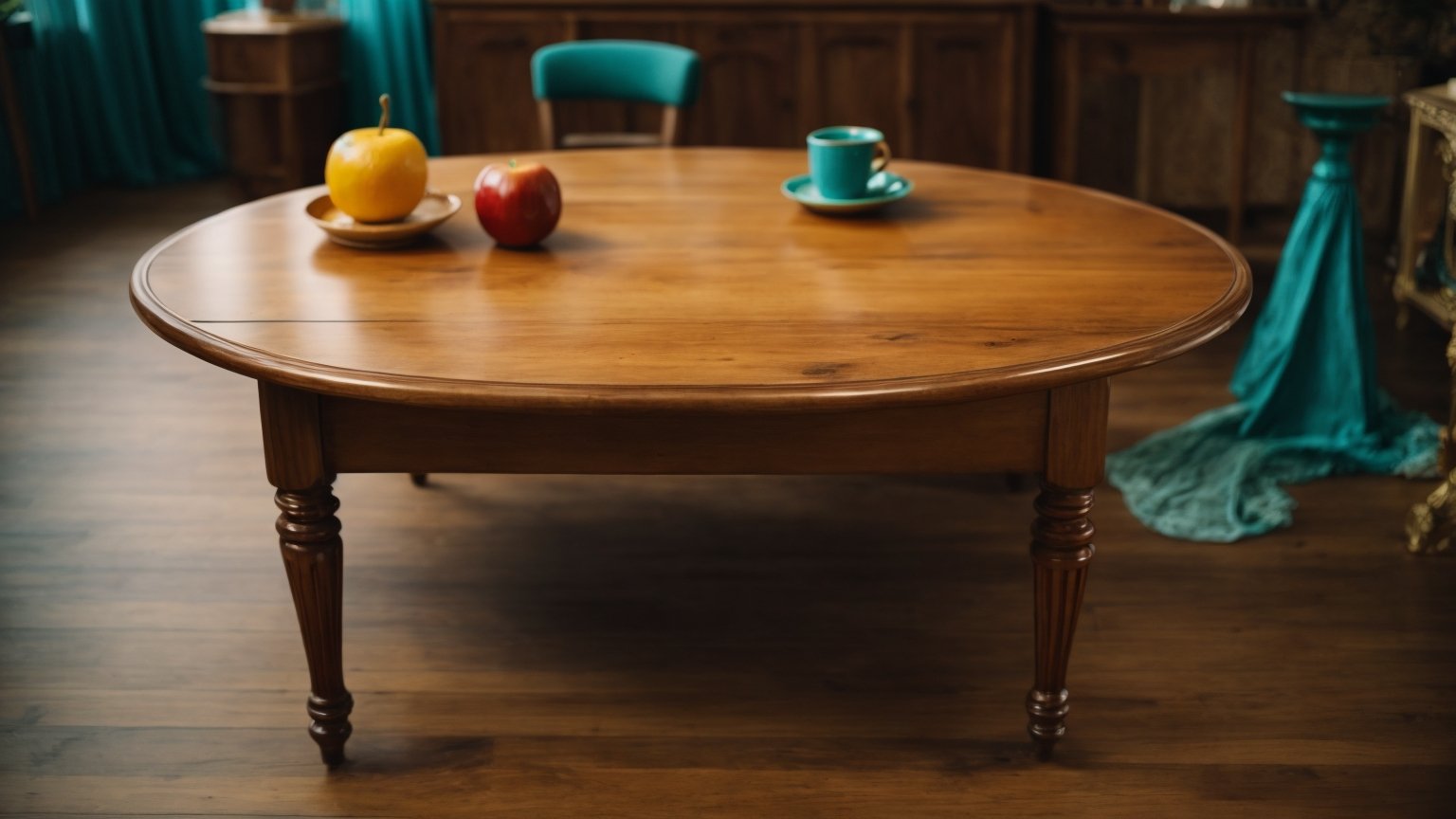Is your wooden table feeling sticky and gross to the touch? It can be frustrating to try to enjoy a meal or work on a project with a table that won’t stop sticking to your hands. If you’re wondering why your wooden table is sticky, there are a few common causes that you should be aware of.
One of the most common reasons for a sticky wooden table is a buildup of dirt, oil, and wax on the surface. Over time, these substances can accumulate and create a sticky residue that is difficult to remove. Another common cause is a poor quality finish that has started to break down, leaving a sticky surface behind. Children and harsh cleaning agents can also contribute to a sticky table.
In this article, we’ll explore the different reasons why your wooden table might be sticky and provide some tips on how to fix the problem. Whether you have a varnished, stained, or painted table, we’ll cover the most common causes of stickiness and offer solutions that you can try at home. By the end of this article, you’ll have a better understanding of why your table is sticky and how to get it back to its original condition.
Understanding Your Wooden Table

When your wooden table feels sticky, it can be frustrating and uncomfortable. But before you can fix the problem, you need to understand what might be causing it. Here are some factors that can affect the stickiness of your wooden table:
Material Composition
The type of wood your table is made from can affect its stickiness. Some types of wood are naturally more porous than others, which means they can absorb more moisture and become sticky. For example, pine and oak are more porous than maple or cherry. Additionally, if your table has a veneer or laminate top, the adhesive used to attach it to the underlying wood can also contribute to stickiness.
Age and Usage
Over time, your wooden table may become sticky due to wear and tear. This can happen if the finish on the table wears away, leaving the wood exposed to moisture and dirt. Additionally, if you use your table frequently, food and drink spills can accumulate and contribute to stickiness. Children may also contribute to stickiness by leaving sticky fingerprints or spills on the table.
To prevent stickiness, it’s important to clean your table regularly and use coasters and placemats to protect the surface. Avoid using harsh cleaning agents or excess wax, which can contribute to stickiness. If your table is already sticky, you can try cleaning it with a mild soap and water solution or a vinegar and water solution. Be sure to dry the table thoroughly after cleaning to prevent moisture from accumulating.
By understanding the material composition and age and usage of your wooden table, you can take steps to prevent or fix stickiness and keep your table looking and feeling great.
Causes of Stickiness
If you have a wooden table that feels sticky to the touch, there are several possible causes. In this section, we will explore some of the most common reasons why wooden tables become sticky.
Spills and Stains
One of the most common causes of a sticky wooden table is spills and stains. Food, drinks, and other substances can leave residue on the surface of the table that can make it feel sticky. If spills and stains are not cleaned up promptly, they can become more difficult to remove and may even damage the finish of the table.
To prevent spills and stains from causing stickiness on your wooden table, it is important to clean up any spills as soon as possible. Use a damp cloth to wipe up the spill, and then dry the area thoroughly with a clean towel. If the spill has already dried, you may need to use a mild cleaning solution to remove the residue.
Humidity and Temperature
Humidity and temperature can also contribute to stickiness on wooden tables. When the air is humid, moisture can be absorbed into the wood, causing it to swell and become sticky. Similarly, high temperatures can cause the wood to expand and contract, which can also lead to stickiness.
To prevent humidity and temperature from causing stickiness on your wooden table, try to keep the room at a consistent temperature and humidity level. Use a dehumidifier or air conditioner if necessary to control the humidity levels in the room.
Improper Cleaning Methods

Using improper cleaning methods can also cause wooden tables to become sticky. Harsh chemicals, abrasive cleaners, and excessive amounts of water can all damage the finish of the table and leave it feeling sticky.
To clean your wooden table properly and avoid stickiness, use a soft cloth and a mild cleaning solution. Avoid using abrasive scrubbers or harsh chemicals, and be sure to dry the table thoroughly after cleaning to prevent moisture from being absorbed into the wood.
By understanding the causes of stickiness on wooden tables, you can take steps to prevent it from happening and keep your table looking and feeling great for years to come.
Preventing Stickiness
If you want to keep your wooden table from becoming sticky, there are a few measures you can take to prevent it from happening in the first place. Here are some tips:
Proper Cleaning Techniques
One of the best ways to prevent stickiness on your wooden table is to use proper cleaning techniques. Avoid using harsh chemicals or abrasive cleaners that can damage the finish of your table. Instead, use a mild soap and warm water to clean your table. Be sure to wipe up any spills or stains immediately to prevent them from setting in and causing stickiness.
Use of Coasters and Mats
Another way to prevent stickiness on your wooden table is to use coasters and mats. These can help protect the surface of your table from spills and stains, which can lead to stickiness. Use coasters for drinks and mats for hot dishes to prevent heat damage to your table.
Regular Maintenance
Regular maintenance is also important for preventing stickiness on your wooden table. This includes dusting your table regularly to remove any dirt or debris that can scratch the surface. You should also apply a protective wax or oil to your table periodically to help maintain its finish and prevent stickiness.
By following these tips, you can help prevent stickiness on your wooden table and keep it looking great for years to come.
Solving the Stickiness Problem
If your wooden table is sticky, don’t worry, there are ways to solve the problem. Here are some solutions that you can try:
DIY Cleaning Solutions
If the stickiness is caused by food residues or harsh cleaning agents, you can try cleaning your table with natural ingredients that you probably already have in your kitchen. Here are some DIY cleaning solutions that you can try:
- Vinegar and Water: Mix equal parts of white vinegar and water in a spray bottle. Spray the solution on the table and wipe it with a clean cloth. Vinegar is a natural disinfectant and can help remove sticky residues.
- Baking Soda and Water: Mix baking soda and water to make a paste. Apply the paste on the table and scrub it with a soft brush. Baking soda is a natural abrasive and can help remove sticky residues.
- Tea: Steep black tea bags in boiling water for 10 minutes. Let the tea cool down and then use it to clean the table. The tannic acid in the tea can help remove stickiness.
Professional Help
If the stickiness is caused by a poor quality finish or excess wax, you may need to seek professional help. Here are some options:
- Refinishing: A professional can strip the old finish off your table and apply a new finish. This can be expensive, but it will give your table a new lease of life.
- Wax Removal: A professional can remove excess wax from your table. This is a less expensive option than refinishing, but it may not be as effective.
Remember, prevention is better than cure. To prevent stickiness in the future, avoid using harsh cleaning agents, wipe spills immediately, and use coasters and placemats to protect your table.
